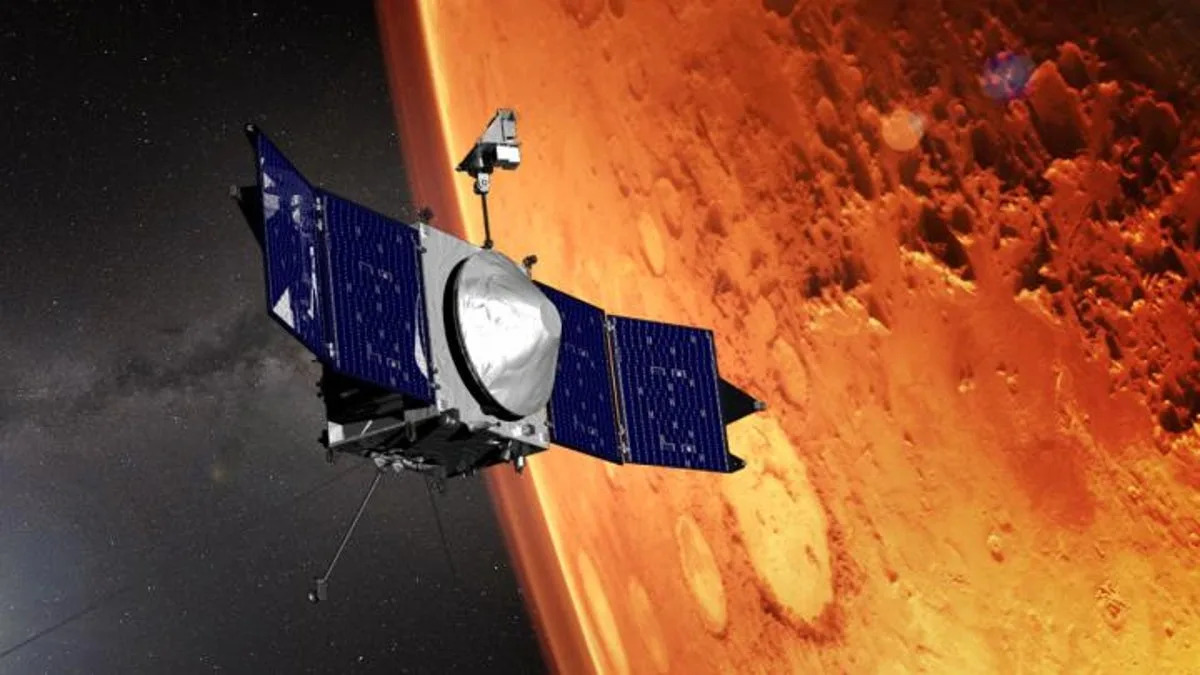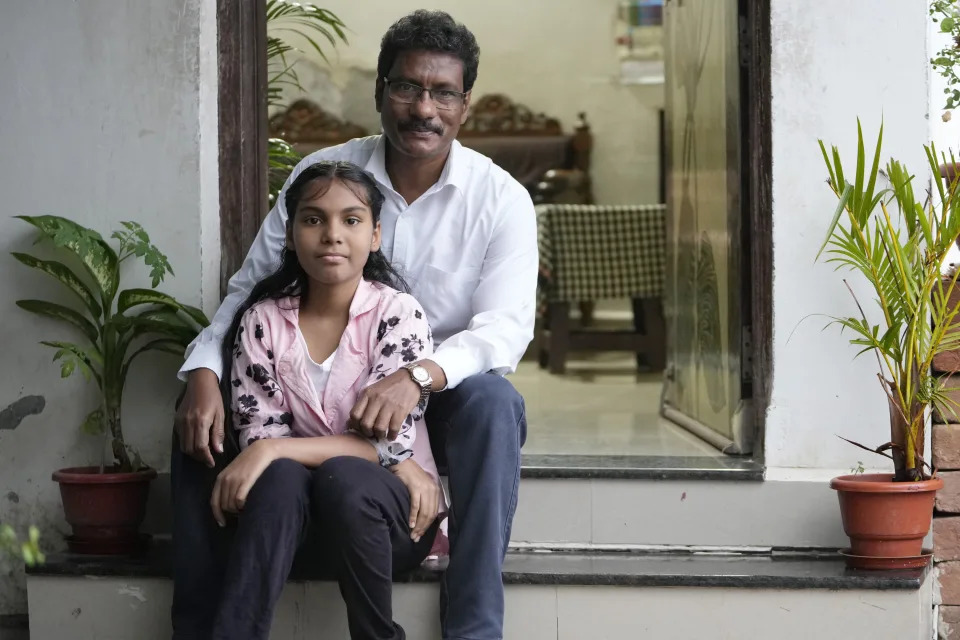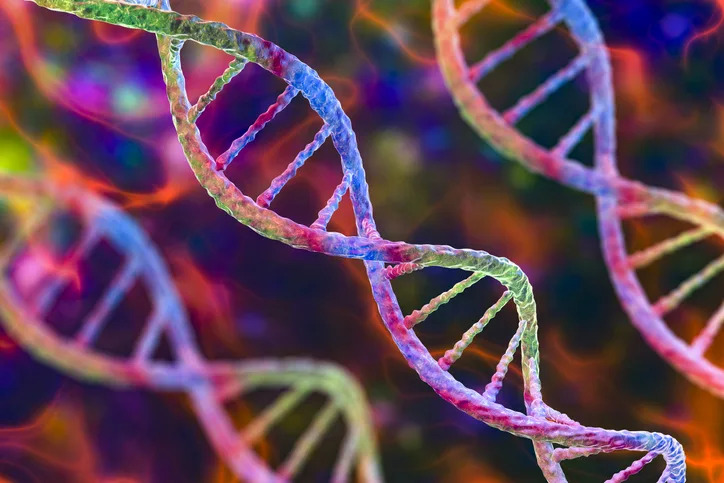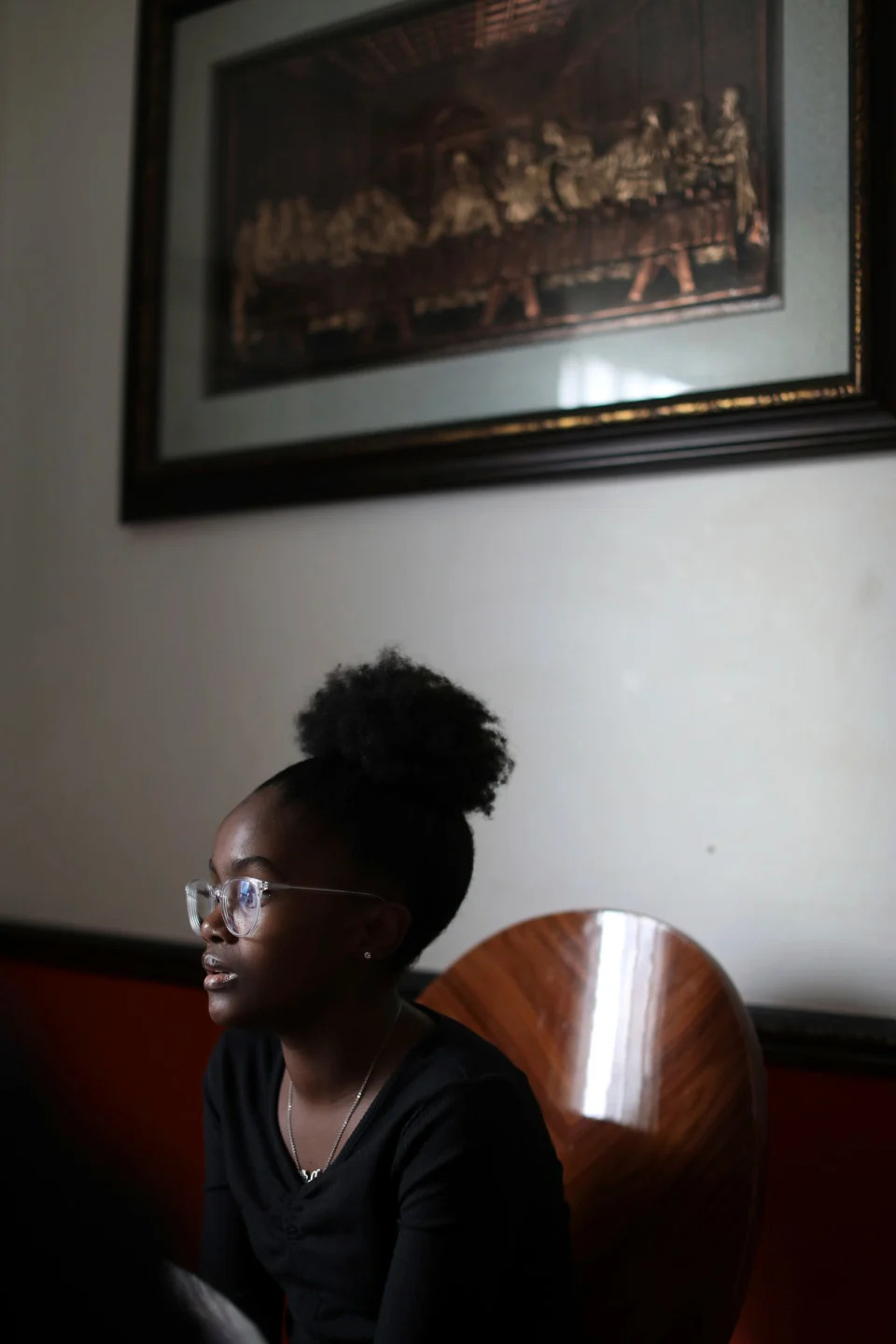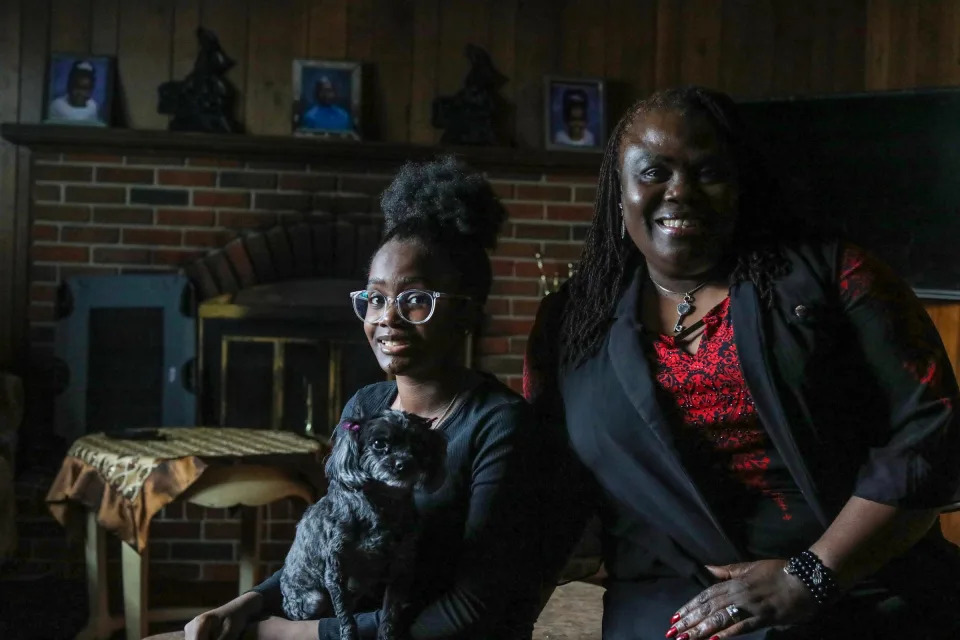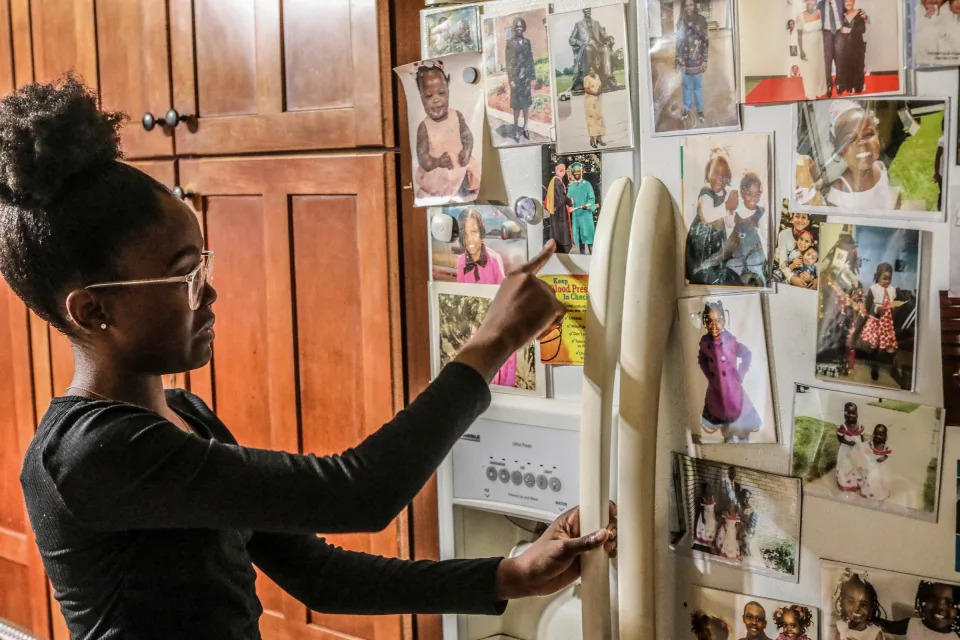Arctic Report Card 2023: From wildfires to melting sea ice, the warmest summer on record had cascading impacts across the Arctic
Rick Thoman, University of Alaska Fairbanks;
Rick Thoman, University of Alaska Fairbanks;
Matthew L. Druckenmiller, University of Colorado Boulder,
Subsea permafrost: A wild card for climate
The report includes 12 essays exploring the effects of climate and ecosystem changes across the Arctic and how communities are adapting. One is a wake-up call about the risks in subsea permafrost, a potentially dangerous case of “out of sight, out of mind.”
Subsea permafrost is frozen soil in the ocean floor that is rich in organic matter. It has been gradually thawing since it was submerged after Northern Hemisphere ice sheets retreated thousands of years ago. Today, warmer ocean temperatures are likely accelerating the thawing of this hidden permafrost.
Just as with permafrost on land, when subsea permafrost thaws, the organic matter it contains decays and releases methane and carbon dioxide – greenhouse gases that contribute to global warming and worsen ocean acidification.

Known permafrost zones in the Northern Hemisphere. Greens are subsea permafrost. GRID-Arendal/Nunataryuk, CC BY-ND
Scientists estimate that nearly 1 million square miles (2.5 million square kilometers) of subsea permafrost remains, but with little research outside the Beaufort Sea and Kara Sea, no one knows how soon it may release its greenhouse gases or how intense the warming effects will be.
Salmon, reindeer and human lives
For many people living in the Arctic, climate change is already disrupting lives and livelihoods.
Indigenous observers describe changes in the sea ice that many people rely on for both subsistence hunting and coastal protection from storms. They have noted shifts in wind patterns and increasingly intense ocean storms. On land, rising temperatures are making river ice less reliable for travel, and thawing permafrost is sinking roads and destabilizing homes.

Highlights from the Arctic Report Card 2023. NOAA, Arctic Report Card 2023
Obvious and dramatic changes are happening within human lifetimes, and they cut to the core of Indigenous cultures to the point that people are having to change how they put food on the table.
Western Alaska communities that rely on Chinook salmon saw another year of extreme low numbers of returning adult salmon in 2023, scarcity that disrupts both cultural practices and food security. Yukon River Chinook have decreased in size by about 6% since the 1970s, and they’re producing fewer offspring. Then, in 2019, the year when many of this year’s returning Chinook salmon were born, exceptionally warm river water killed many of the young.
The returning Chinook salmon population has been so small during the past two years that fisheries have been closed even for subsistence harvest, which is the highest priority, in hopes that the salmon population recovers.
The inability to fish, or to hunt seals because the sea ice has thinned, is not just a food issue. Time spent at fish camps is critical for many Alaska Indigenous cultures and traditions, and kids are increasingly missing out on that experience.
As Indigenous communities adapt to ecosystem changes, people are also working to heal their landscapes.

A Sámi reindeer herder in traditional clothes counts new calves while preparing the herd for the arduous winter months. In Pictures Ltd./Corbis via Getty Images
In Finland, an effort to restore damaged reindeer habitat in collaboration with Sámi reindeer herders is helping to preserve their way of life. For many decades, commercial logging was allowed to tear up hundreds to thousands of square miles of reindeer peatland habitat.
The Sámi and their partners are working to replant turf and rewild 125,000 acres (52,000 hectares) of peatlands for reindeer grazing. Degraded peatlands also release greenhouse gases, contributing to climate change. Keeping them healthy helps capture and store carbon away from the atmosphere.
Temperatures in the Arctic have been rising more than three times faster than the global average, so it’s not surprising that the Arctic saw its warmest summer and sixth warmest year on record. The 2023 Arctic Report Card is a reminder of what’s a stake, both the risks as the planet warms and the lives and cultures already being disrupted by climate change.
This article is republished from The Conversation, a nonprofit, independent news organization bringing you facts and analysis to help you make sense of our complex world.
It was written by: Rick Thoman, University of Alaska Fairbanks; Matthew L. Druckenmiller, University of Colorado Boulder, and Twila A. Moon, University of Colorado Boulder.
Read more:
Meltwater is infiltrating Greenland’s ice sheet through millions of hairline cracks – destabilizing its structure
Arctic Report Card 2022: The Arctic is getting rainier and seasons are shifting, with broad disturbances for people, ecosystems and wildlife
Rick Thoman receives funding from the National Oceanic and Atmospheric Administration (NOAA) for serving as an editor for the Arctic Report Card.
Matthew L. Druckenmiller receives funding from the National Oceanic and Atmospheric Administration (NOAA) for serving as an editor for the Arctic Report Card.
Twila A. Moon receives funding from the National Oceanic and Atmospheric Administration (NOAA) for serving as an editor for the Arctic Report Card.
Twila A. Moon, University of Colorado Boulder
Tue, December 12, 2023
Tue, December 12, 2023
THE CONVERSATION

Giovanna Stevens grew up harvesting salmon at her family’s fish camp on Alaska's Yukon River. Climate change is interrupting hunting and fishing traditions in many areas. AP Photo/Nathan Howard
The year 2023 shattered the record for the warmest summer in the Arctic, and people and ecosystems across the region felt the impact.
Wildfires forced evacuations across Canada. Greenland was so warm that a research station at the ice sheet summit recorded melting in late June, only its fifth melting event on record. Sea surface temperatures in the Barents, Kara, Laptev and Beaufort seas were 9 to 12 degrees Fahrenheit (5 to 7 degrees Celsius) above normal in August.
While reliable instrument measurements go back only to around 1900, it’s almost certain this was the Arctic’s hottest summer in centuries.

Summer heat extremes in 2023 and over time. NOAA, Arctic Report Card 2023
The year started out unusually wet, and snow accumulation during the winter of 2022-23 was above average across much the Arctic. But by May, high spring temperatures had left the North American snowpack at a record low, exposing ground that quickly warmed and dried, fueling lightning-sparked fires across Canada.
In the 2023 Arctic Report Card, released Dec. 12, we brought together 82 Arctic scientists from around the world to assess the Arctic’s vital signs, the changes underway and their effects on lives across the region and around the world.
Heat’s cascading effects throughout the Arctic
In an area as large as the Arctic, setting a new temperature record for a season by two-tenths of a degree Fahrenheit (0.1 degrees Celsius) of warming would be significant. Summer 2023 – July, August and September – shattered the previous record, set in 2016, by four times that. Temperatures almost everywhere in the Arctic were above normal.
A closer look at events in Canada’s Northwest Territories shows how rising air temperature, sea ice decline and warming water temperature feed off one another in a warming climate.

Arctic snow cover in 2023 and over time. NOAA, Arctic Report Card 2023
The winter snow cover melted early across large parts of northern Canada, providing an extra month for the Sun to heat up the exposed ground. The heat and lack of moisture dried out organic matter on and just below the surface; by November, 70,000 square miles (180,000 square kilometers) had burned across Canada, about a fifth of it in the Northwest Territories.
The very warm weather in May and June 2023 in the Northwest Territories also heated up the mighty Mackenzie River, which sent massive amounts of warm water into the Beaufort Sea to the north. The warm water melted the sea ice early, and currents also carried it west toward Alaska, where Mackenzie River water contributed to early sea ice loss along most of Northeast Alaska and to increased tundra vegetation growth.

Sea surface temperatures have been rising. NOAA, Arctic Report Card 2023
Similar warmth in western Siberia also contributed to quickly melting sea ice and to high sea surface temperatures in the Kara and Laptev seas north of Russia.
The Arctic’s declining sea ice has been a big contributor to the tremendous increase in average fall temperatures across the region. Dark open water absorbs the sun’s rays during the summer and, in the autumn, acts as a heating pad, releasing heat back into the atmosphere. Even thin sea ice can greatly limit this heat transfer and allow dramatic cooling of air just above the surface, but the past 17 years have seen the lowest sea ice extents on record.

Giovanna Stevens grew up harvesting salmon at her family’s fish camp on Alaska's Yukon River. Climate change is interrupting hunting and fishing traditions in many areas. AP Photo/Nathan Howard
The year 2023 shattered the record for the warmest summer in the Arctic, and people and ecosystems across the region felt the impact.
Wildfires forced evacuations across Canada. Greenland was so warm that a research station at the ice sheet summit recorded melting in late June, only its fifth melting event on record. Sea surface temperatures in the Barents, Kara, Laptev and Beaufort seas were 9 to 12 degrees Fahrenheit (5 to 7 degrees Celsius) above normal in August.
While reliable instrument measurements go back only to around 1900, it’s almost certain this was the Arctic’s hottest summer in centuries.

Summer heat extremes in 2023 and over time. NOAA, Arctic Report Card 2023
The year started out unusually wet, and snow accumulation during the winter of 2022-23 was above average across much the Arctic. But by May, high spring temperatures had left the North American snowpack at a record low, exposing ground that quickly warmed and dried, fueling lightning-sparked fires across Canada.
In the 2023 Arctic Report Card, released Dec. 12, we brought together 82 Arctic scientists from around the world to assess the Arctic’s vital signs, the changes underway and their effects on lives across the region and around the world.
Heat’s cascading effects throughout the Arctic
In an area as large as the Arctic, setting a new temperature record for a season by two-tenths of a degree Fahrenheit (0.1 degrees Celsius) of warming would be significant. Summer 2023 – July, August and September – shattered the previous record, set in 2016, by four times that. Temperatures almost everywhere in the Arctic were above normal.
A closer look at events in Canada’s Northwest Territories shows how rising air temperature, sea ice decline and warming water temperature feed off one another in a warming climate.

Arctic snow cover in 2023 and over time. NOAA, Arctic Report Card 2023
The winter snow cover melted early across large parts of northern Canada, providing an extra month for the Sun to heat up the exposed ground. The heat and lack of moisture dried out organic matter on and just below the surface; by November, 70,000 square miles (180,000 square kilometers) had burned across Canada, about a fifth of it in the Northwest Territories.
The very warm weather in May and June 2023 in the Northwest Territories also heated up the mighty Mackenzie River, which sent massive amounts of warm water into the Beaufort Sea to the north. The warm water melted the sea ice early, and currents also carried it west toward Alaska, where Mackenzie River water contributed to early sea ice loss along most of Northeast Alaska and to increased tundra vegetation growth.

Sea surface temperatures have been rising. NOAA, Arctic Report Card 2023
Similar warmth in western Siberia also contributed to quickly melting sea ice and to high sea surface temperatures in the Kara and Laptev seas north of Russia.
The Arctic’s declining sea ice has been a big contributor to the tremendous increase in average fall temperatures across the region. Dark open water absorbs the sun’s rays during the summer and, in the autumn, acts as a heating pad, releasing heat back into the atmosphere. Even thin sea ice can greatly limit this heat transfer and allow dramatic cooling of air just above the surface, but the past 17 years have seen the lowest sea ice extents on record.
Subsea permafrost: A wild card for climate
The report includes 12 essays exploring the effects of climate and ecosystem changes across the Arctic and how communities are adapting. One is a wake-up call about the risks in subsea permafrost, a potentially dangerous case of “out of sight, out of mind.”
Subsea permafrost is frozen soil in the ocean floor that is rich in organic matter. It has been gradually thawing since it was submerged after Northern Hemisphere ice sheets retreated thousands of years ago. Today, warmer ocean temperatures are likely accelerating the thawing of this hidden permafrost.
Just as with permafrost on land, when subsea permafrost thaws, the organic matter it contains decays and releases methane and carbon dioxide – greenhouse gases that contribute to global warming and worsen ocean acidification.

Known permafrost zones in the Northern Hemisphere. Greens are subsea permafrost. GRID-Arendal/Nunataryuk, CC BY-ND
Scientists estimate that nearly 1 million square miles (2.5 million square kilometers) of subsea permafrost remains, but with little research outside the Beaufort Sea and Kara Sea, no one knows how soon it may release its greenhouse gases or how intense the warming effects will be.
Salmon, reindeer and human lives
For many people living in the Arctic, climate change is already disrupting lives and livelihoods.
Indigenous observers describe changes in the sea ice that many people rely on for both subsistence hunting and coastal protection from storms. They have noted shifts in wind patterns and increasingly intense ocean storms. On land, rising temperatures are making river ice less reliable for travel, and thawing permafrost is sinking roads and destabilizing homes.

Highlights from the Arctic Report Card 2023. NOAA, Arctic Report Card 2023
Obvious and dramatic changes are happening within human lifetimes, and they cut to the core of Indigenous cultures to the point that people are having to change how they put food on the table.
Western Alaska communities that rely on Chinook salmon saw another year of extreme low numbers of returning adult salmon in 2023, scarcity that disrupts both cultural practices and food security. Yukon River Chinook have decreased in size by about 6% since the 1970s, and they’re producing fewer offspring. Then, in 2019, the year when many of this year’s returning Chinook salmon were born, exceptionally warm river water killed many of the young.
The returning Chinook salmon population has been so small during the past two years that fisheries have been closed even for subsistence harvest, which is the highest priority, in hopes that the salmon population recovers.
The inability to fish, or to hunt seals because the sea ice has thinned, is not just a food issue. Time spent at fish camps is critical for many Alaska Indigenous cultures and traditions, and kids are increasingly missing out on that experience.
As Indigenous communities adapt to ecosystem changes, people are also working to heal their landscapes.

A Sámi reindeer herder in traditional clothes counts new calves while preparing the herd for the arduous winter months. In Pictures Ltd./Corbis via Getty Images
In Finland, an effort to restore damaged reindeer habitat in collaboration with Sámi reindeer herders is helping to preserve their way of life. For many decades, commercial logging was allowed to tear up hundreds to thousands of square miles of reindeer peatland habitat.
The Sámi and their partners are working to replant turf and rewild 125,000 acres (52,000 hectares) of peatlands for reindeer grazing. Degraded peatlands also release greenhouse gases, contributing to climate change. Keeping them healthy helps capture and store carbon away from the atmosphere.
Temperatures in the Arctic have been rising more than three times faster than the global average, so it’s not surprising that the Arctic saw its warmest summer and sixth warmest year on record. The 2023 Arctic Report Card is a reminder of what’s a stake, both the risks as the planet warms and the lives and cultures already being disrupted by climate change.
This article is republished from The Conversation, a nonprofit, independent news organization bringing you facts and analysis to help you make sense of our complex world.
It was written by: Rick Thoman, University of Alaska Fairbanks; Matthew L. Druckenmiller, University of Colorado Boulder, and Twila A. Moon, University of Colorado Boulder.
Read more:
Meltwater is infiltrating Greenland’s ice sheet through millions of hairline cracks – destabilizing its structure
Arctic Report Card 2022: The Arctic is getting rainier and seasons are shifting, with broad disturbances for people, ecosystems and wildlife
Rick Thoman receives funding from the National Oceanic and Atmospheric Administration (NOAA) for serving as an editor for the Arctic Report Card.
Matthew L. Druckenmiller receives funding from the National Oceanic and Atmospheric Administration (NOAA) for serving as an editor for the Arctic Report Card.
Twila A. Moon receives funding from the National Oceanic and Atmospheric Administration (NOAA) for serving as an editor for the Arctic Report Card.
Emily Mae Czachor
Wed, December 13, 2023
Not unlike the rest of the Earth, this summer was the hottest ever recorded in the Arctic, where scientists say human-caused climate change is heating things up faster than anywhere else in the world. Marked consequences of that have already been seen and felt in communities in and around the planet's northernmost polar region, and their domino effects could end up being even more severe and widespread than they are now.
Citing its latest Arctic Report Card — an annual assessment of how the region is faring environmentally and released this week — the National Oceanic and Atmospheric Administration warned that ongoing carbon emissions, in the United States and beyond, will only continue to drive dramatic changes in the Arctic that in turn contribute to extreme weather events in places far from there. Officials with the agency urged people to take action.
"The overriding message from this year's report card is that the time for action is now," said Rick Spinrad, the administrator of the NOAA, in a statement. "NOAA and our federal partners have ramped up our support and collaboration with state, tribal and local communities to help build climate resilience. At the same time, we as a nation and global community must dramatically reduce greenhouse gas emissions that are driving these changes."
In its 18th year, the Arctic Report Card summarizes the work of 82 authors from 13 countries. Those who contributed to the latest edition shared several stark takeaways, including the fact that summer surface air temperatures in the Arctic were the warmest observed in the Arctic since record-keeping began more than 100 years ago, as well as the fact that 2023 was the region's sixth-warmest year on record overall.
The report came out after the United Nations' weather agency declared earlier this year that the planet had experienced its hottest three-month stretch on record over the summer, with experts drawing distinct connections to between the soaring temperatures and devastating wildfires that scorched huge areas of land across multiple continents and depleted air quality to an extent that threatened human health. And, more recently, the European Union's Copernicus Climate Change Service announced that 2023 was globally the hottest year on record, too.
Places within and just outside of the Arctic circle faced consistent weather extremes this year, the new report noted, as precipitation in those areas rose above long-term averages during all four seasons. Local communities and Indigenous people across the polar region continued to suffer outsize consequences of the environmental shifts caused by climate change, it said. Storms of increasing intensity and frequency, as well as unpredictable fishing conditions drastically impacting food security and business for Indigenous people in Alaska, are some prominent examples of that.
The Alaska Arctic Observatory and Knowledge Hub contributed its observations to the Arctic Report Card in 2023 for the first time. The observatory, which works with coastal Indigenous observers to document long-term environmental changes and their impacts in northern Alaska, said the area has experienced "sea ice loss, warmer air and ocean temperatures, changing wind patterns, and increased intensity and frequency of coastal storms that contribute to flooding and erosion."
The observatory noted that extreme weather has affected cultural infrastructure, traditional harvests and activities, and travel safety over land and sea. Included in the report was a message sent by one observer, Bobby Schaeffer, to the Alaska observatory in September 2022, which said, "We had three strong storms. The July 18 storm had the strongest winds. Southwest winds to 50 mph brought in a storm surge that set the record... Wind, huge surf and a lot of rain. The second storm hit us on July 28 and Merbok on September 14 [to 18]... I think we lost more earth to the ocean than ever before."
Changes in the Arctic region directly impacted some of the extreme weather this summer across large and more southern parts of North America, with experts linking "unprecedented" polar temperature increases to the warmer spring and early snowmelt over northern Canada that laid the foundation for its worst wildfire season to date.
The consequences could extend further, as the 2023 report showed a continued decline in sea ice extent and melting on the highest point on Greenland's ice sheet — which has only happened five times in 34 years. A separate study on melting in Greenland, published in November, showed that ice shelved in the region lost more than 1/3 of its volume in the last 50 years because of rising temperatures. If that trend continues, scientists warned of "dramatic consequences" for the planet, since the Greenland ice sheet is one of the major contributors to rising sea levels across the world.
The 2023 Arctic Report Card showcased communities and organizations, like the Alaska Arctic Observatory, that are working on solutions to combat climate change and its far-reaching impacts.
In Finland, an organization called the Snowchange Cooperative has also helped create huge improvements to sprawling peatlands degraded through mining and industrial forestry. Rural Finnish and Indigenous Sámi communities worked with the organization to successfully restore more than 100,000 acres of mined and drained Finnish peatlands when the report was written. Another rural northern community in the remote Svalbard, Norway — the fastest-warming place on Earth — is also taking significant steps to cut emissions that are melting its surrounding glaciers.
Arctic suffered hottest summer on record: NOAA
Nick Robertson
Wed, December 13, 2023

Summer air temperatures in the Arctic were the highest ever recorded this year, the National Oceanic and Atmospheric Administration (NOAA) revealed in its annual report on the region.
It was the sixth-warmest year ever in the Arctic overall, as climate change raised temperatures globally. Sea ice levels also declined at record rates, with a domino effect impacting fisheries throughout Alaska and northern Canada.
“The overriding message from this year’s report card is that the time for action is now,” NOAA administrator Rick Spinrad said. “NOAA and our federal partners have ramped up our support and collaboration with state, tribal and local communities to help build climate resilience. At the same time, we as a nation and global community must dramatically reduce greenhouse gas emissions that are driving these changes.”
The average summer temperature this year was 43 degrees, with parts of northeast Alaska and northwest Canada reaching as much as 7.2 degrees above the average temperature from 1991-2020, according to the report.
Those higher temperatures lead to more green vegetation, which was near an all-time record this year, and dry out tundra, which encourages wildfires. Canada saw the worst wildfire season in its history in 2023, with innumerable wildfires raging from the Arctic to the U.S. border in the east and west.
Sea surface temperatures were also significantly above average, with parts of the Arctic Ocean reaching 9-13 degrees above normal levels, the report said. The increasing temperatures can lead to phytoplankton blooms, which can threaten ocean ecosystems.
As temperatures rise, ice sheet levels continue to fall. The 17 lowest ice sheet events have occurred in the last 17 consecutive years, with the lowest point annually in September. 2023’s ice sheet was the sixth-smallest on record, since 1979.
A June study estimated that summer arctic sea ice is already on its way out and that nothing can be done to save what is being taken away by consistent warming. Researchers estimated that the Arctic will be “practically” ice-free by the middle of the century during summers.
This year’s report was the first to include information from Alaska Arctic Observatory and Knowledge Hub, a network of indigenous Alaskans working with the University of Alaskan to track climate data.
Arctic warming threatens wider world with rising seas-US report
Tue, December 12, 2023

Climate change thaws world's northernmost research station
By Timothy Gardner and Daniel Trotta
(Reuters) - The Arctic experienced the warmest summer on record this year, contributing to extraordinary wildfires and melting glaciers while threatening the rest of the world with problems including higher sea levels, a U.S. report said on Tuesday.
Summer surface air temperatures in the Arctic were the highest since at least 1900 as the Arctic continues to warm twice as fast as the rest of the globe because of human-caused climate change, according to the National Oceanic and Atmospheric Administration's (NOAA) 2023 Arctic Report Card.
The annual report showed more frequent extreme weather and climate events with global impact.
Warming across parts of northern Canada and the Canadian Arctic Archipelago coincided with below-normal precipitation over those areas, contributing to an extreme wildfire season there.
Greenland lost another 350 trillion pounds (158.7 billion metric tons) of mass from its ice sheet, extending a trend of losing land ice since 1998.
"Arctic warming has far-reaching long-term consequences beyond the region," the report said as land ice losses contribute to rising seas that threaten housing, transportation and businesses in coastal cities.
The loss to Greenland's ice sheet this year was well below the 22-year average because of abundant snowfall, but the heat still took its toll.
Summit Station, the highest point on the ice sheet, experienced melting for only the fifth time in the 34-year record, the report said. The cumulative melt-day area - a measure of the area that melts each day - approached an all-time record.
The report found that "irreversible climate harms caused by an overheating Arctic will continue to reverberate across North America and Eurasia," said Brenda Ekwurzel, the director of climate science at the Union of Concerned Scientists, who has conducted climate research in the Arctic but did not contribute to the report.
The report also detailed "unequivocal evidence of Arctic greening" as warmer temperatures, increased precipitation and melting permafrost result in shrubs and trees taking over grassland and tundra.
Higher greening was seen this year in the North American tundra with relatively low greening in the Eurasian Arctic, it said. So-called "peak tundra greenness" in the Arctic hit the third-highest level in 24 years of study.
Greening could speed climate change by releasing large amounts of carbon dioxide that had been stored in the permafrost.
(Reporting by Timothy Gardner in Washington and Daniel Trotta in Carlsbad, California, editing by Deepa Babington)
2023 Arctic summer was warmest on record, scientists say
Angeli Gabriel
Tue, December 12, 2023

2023 Arctic summer was warmest on record, scientists say
The average surface air temperature in the Arctic from July through September 2023 was the warmest summer on record at 43 degrees Fahrenheit, according to NOAA.
Dating back to 1940, the record also indicates that 2023 was the Arctic’s sixth-warmest year on record, with the average surface air temperature being 20 degrees Fahrenheit.
NOAA noted that since 1940, annual average temperatures in the Arctic have risen by .45 degrees Fahrenheit per decade. Plus, average summer temperatures have risen .31 degrees Fahrenheit per decade.
WORLD HAD ITS HOTTEST AUGUST ON RECORD DURING SIZZLING SUMMER, STUDY FINDS
These findings are part of NOAA’s annual 2023 Arctic Report Card, which documents how human-caused warming of the air, ocean and land is affecting communities and ecosystems across the Arctic.
In addition to warming surface air temperatures, the Arctic Report Card showed that the sea ice extent in the Arctic has continued to decline. According to NOAA, the 17 lowest Arctic sea ice extents on record have occurred during the last 17 years.
The record for the sea ice extent, which began in 1979, shows that the sea ice extent of 2023 was the sixth lowest in the past 44 years.

A polar bear is seen in the Franz Joseph Land archipelago in the Arctic Ocean.
Back on land, the Greenland ice sheet continued to lose mass despite above-average snow accumulation, NOAA said. The highest point on the ice sheet, known as Summit Station, reached a temperature of 32.7 degrees Fahrenheit and experienced melting for the fifth time in its 34-year record.
GREENLAND GLACIER MELTING FASTER THAN ORIGINALLY THOUGHT
The Greenland ice sheet, along with the Antarctic ice sheet, contain over 99 percent of freshwater ice on Earth, according to the National Snow and Ice Data Center. NSIDC noted that if both ice sheets were to melt completely, they would raise the sea level by approximately 223 feet.

Greenland Melt Extent 2023.
"The overriding message from this year’s report card is that the time for action is now," said Rick Spinrad, administrator of NOAA.
"NOAA and our federal partners have ramped up our support and collaboration with state, tribal and local communities to help build climate resilience," he added. "At the same time, we as a nation and global community must dramatically reduce greenhouse gas emissions that are driving these changes."
Supplementing the record is the knowledge of Indigenous groups who have lived and worked in the Arctic.
The 2023 Arctic Report Card includes two chapters that cover the importance of using Indigenous knowledge.
For example, one of those chapters describes the work of the Alaska Arctic Observatory and Knowledge Hub, which is a collaboration between the University of Alaska scientists and a network of Iñupiaq observers documenting long-term environmental change and social and cultural impacts on their northern Alaska communities.
In Europe, Indigenous and local knowledge was implemented to help restore peatlands and arboreal forests in Finland, NOAA said. Within the Scandinavian country, Indigenous Sámi people and Finnish villages are working with scientists to restore these wetland ecosystems and forests.


